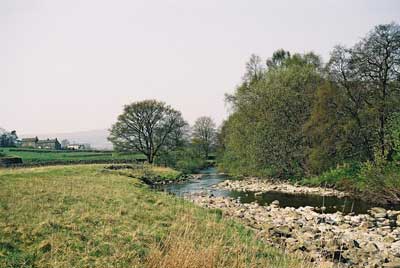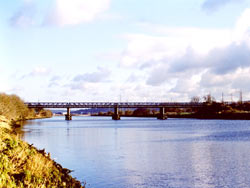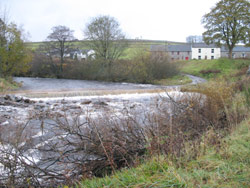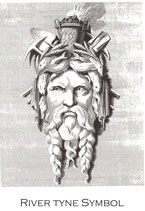
Bridges On The Tyne
FORDS ON THE TYNE

Fords were the first river crossings. To wade across the Tyne either at low tide within its tidal limits or to brave the waters higher upstream was often a hazardous undertaking. At high tide or after rains the river could be impassible. But fords were simple and cheap and lasted into the twentieth century. Bridges replaced fords at the busier and more vital crossing points and ferries sometimes substituted for fords before a bridge was built. When bridges were washed away then the ford would once again provide a means of crossing until a new bridge could be built. The list of fords below is not necessarily complete, but it does show how important fords once were to the movement of people and goods up and down the river.
Fords
- List of known fords from river mouth moving west.
- Blaydon - to Dent's Meadows, an island west of Blaydon.
- Newburn (4) - Stella Haughs Ford; Kelso/Kelshaw Ford; Riding Ford; Newburn ford.
- Hagg Farm near Wylam.
- Styford - to Broomhaugh near Riding Mill.
- Ovingham.
- South Tyne
- Warden 1 mile west of Hexham.
- Bardon Mill (2) - one near present footbridge; and one half a mile west of footbridge.
- High Barnes - 2 miles east of Haltwhistle.
Melkridge - near Haltwhistle. - Haltwhistle.
- Eals - near present footbridge.
- Kirkhaugh - near present footbridge.
- Low Sillyhall Farm - between Alston and Garrigill.
- Garrigill - half a mile west.
- Garrigill - half a mile south.
Fords


- North Tyne
- Chollerford
- Haughton.
- Wark.
- Bellingham.
- Charlton
- Greystead - near present footbridge.
- Thorneyburn - half a mile west of Greystead
- Falstone - west of village.
- Emmethaugh - now under Kielder Water, 2 m west of Falstone.
- Lewisburn - now under Kielder Water.
© Bridges On The Tyne 2006

